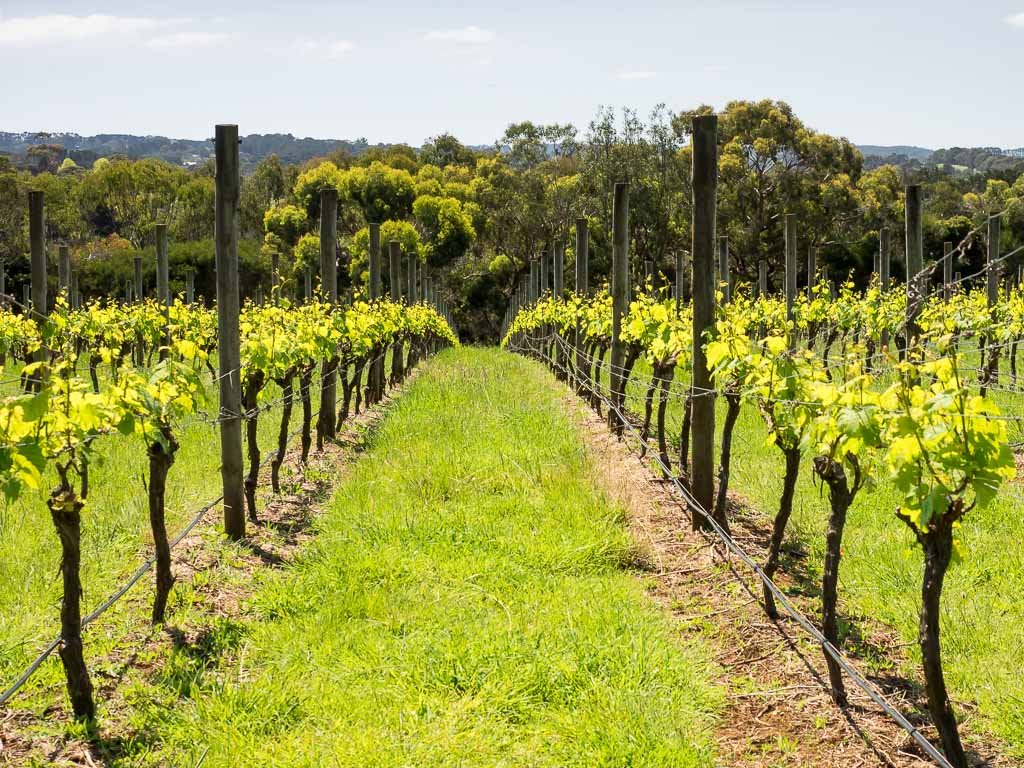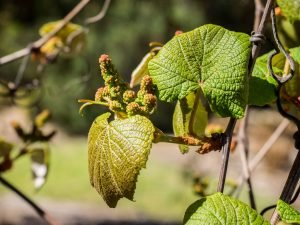
Spring has finally begun in Victoria and after a much delayed budburst, we are now seeing little shoots, baby leaves and even some inflorescences (baby flower heads). Such an exciting time, for viticulturists, the fun starts now. For wine makers, bottling of previous vintages continues, as they clear the tanks ready for Vintage 18.
On the other hand, the students are frantic. Trying to get the last of a whole heap of assignments, mini tests and revision done before exams kick off. I have four this time around; two written, an oral and a tasting exam – fun! On top of that I am now starting to work in my new industry, so please excuse the brevity of this week’s post!
Top 3 things I have learnt this fortnight:
1. Budburst to flowering
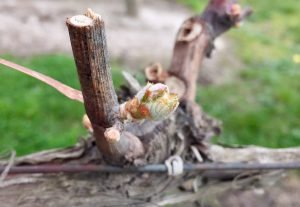 We are now in the midst of a critical phonological stage in for vines. The mean temperature has risen above the critical 10 C and vines all over Australia have awoken from dormancy. The first sign of this new growth stirring is aptly called ‘woolly bud’. Little bumps on the canes and spurs left at pruning swell and take on a woolly appearance. Shortly after that – budburst! The buds give rise to shoots and very early-on the first indication of the vintage can be seen by counting the number of inflorescences on each shoot.
We are now in the midst of a critical phonological stage in for vines. The mean temperature has risen above the critical 10 C and vines all over Australia have awoken from dormancy. The first sign of this new growth stirring is aptly called ‘woolly bud’. Little bumps on the canes and spurs left at pruning swell and take on a woolly appearance. Shortly after that – budburst! The buds give rise to shoots and very early-on the first indication of the vintage can be seen by counting the number of inflorescences on each shoot.
Budburst to flowering is a critical stage for both the current and future vintage. At this stage it is essential that vines are kept free of disease and they are not allowed to grow uncontrolled, forming a dense canopy. Sunlight is thought to play an important role at this stage. Exposing next year’s buds helps them to establish fruitfulness in the following vintage. At this stage, the vine needs plenty of water as roots are also continuing to advance their network deep into the soil. A great deal of micro and macro nutrients are required form the soil to produce the new tissues of the growing canopy. Reduced water levels and disease can result in reduced, smaller leaves, low flowering and therefore poor fruitset.
2. Wine colour
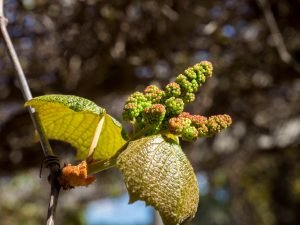
Phenolic compounds, of varying size, are extracted from grape skins, seeds and sometimes stalks during fermentation. Whilst some remain as monomers (singles), other polymerise (form chains) to form tannins. If one or more anthocyanin compounds (a special kind of phenolic) is incorporated into the polymer, red-coloured tannins are produced. If not, tannins are yellow/brown. Other red pigments may be formed during fermentation when anthocyanins react with fermentation products and additives. Their colour is affected by pH and SO2. Other phenolic compounds can also cause co-pigmentation – enhancing the red colour expression of wine.
Under wine pH and SO2 conditions, the coloured structures exist in an equilibrium. Adjustment of pH or SO2 can affect this equilibrium and hence the colour of the wine. The lower the pH (therefore the higher the acidity) of wine the more stable is it and less likely to spoil due to oxidation or microbial attack. It also ensures a vibrant red colour in your glass. Some young red wines can often have a purple hue. As wines age, their tannins may become so big that they fall out of solution, or they break down and the red colours turn brown. Thus older wines tend to have a more orangy brown or Garnet colouring.
3. Yield forecasting
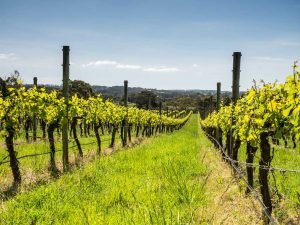 Vineyards, majestic as they are, are crops like any other, and they can be big business. Our class were out in the Yarra valley again this week to do some yield forecasting. It is really important to gain an early indication of yield and monitor it right up to harvest.
Vineyards, majestic as they are, are crops like any other, and they can be big business. Our class were out in the Yarra valley again this week to do some yield forecasting. It is really important to gain an early indication of yield and monitor it right up to harvest.
Grape growers need to estimate their yield for the following important reasons:
- Profit/Loss estimation – to enable budgeting
- Contractual agreements – not all grape growers make the wine themselves, many sell all of their grapes to winemakers, who have strict expectations in terms of quality and quantity.
- Planning requirements like equipment, timing and costs of operational management practices – managing a vineyard is complicated. The bigger the crop, the more labour and equipment is needed.
- Management of vineyard and winery logistics – wineries have a limited capacity, so grape reception needs to be planned
Yield forecasting can be carried out at several stages. The first involved us having lots of fun counting the inflorescences on the new shoots at Zonzo Estate. Yield forecasts can also be carried out at fruitset, when the berries are pea-sized and after veraison (when they are changing colour).
Flat out…
This fortnight I have finished all by two of my assignments, survived my first two shifts as a cellar door hand and been asked to do some vineyard labouring. We had a lovely weekend at the Heathcote festival, I volunteered for two days as a steward at the Royal Melbourne Wine Competition and discovered a couple of new wine varieties in my weekly tastings.
Busy, but so happy. I am doing all I can to try and break into the Australian wine industry and I have never been so motivated to get up at 5am in all my life!
Next week I put my viticulture skills to the test for my first vineyard shift, hit the books for some serious revision and try hard not to get too lost in my dreams of future wine success.
Thank you for reading – until next wine…

